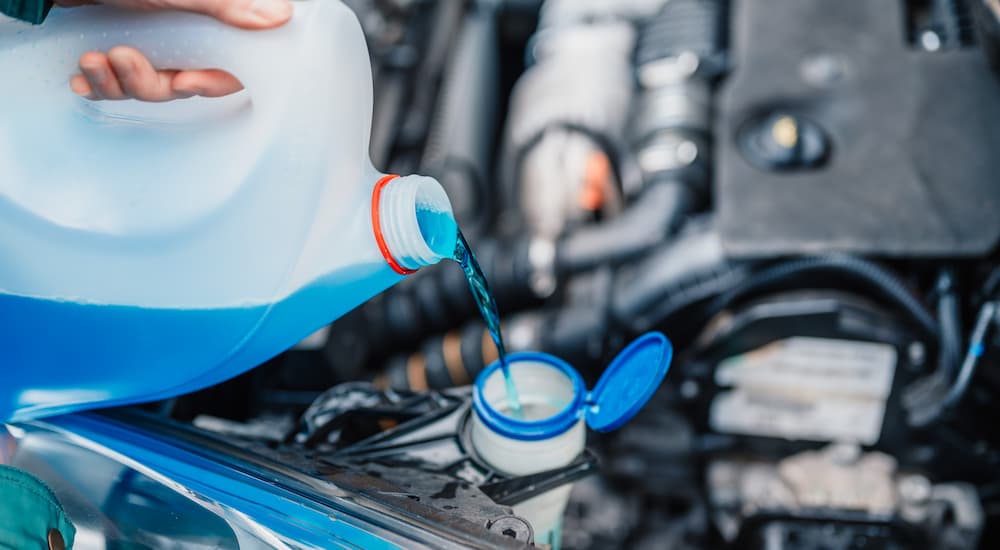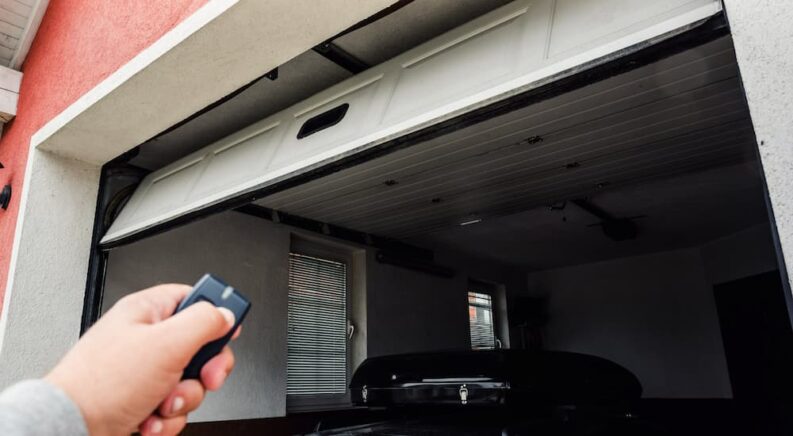There’s something to be said about using the right tool for the job. A convertible can allow you to enjoy a summer day in a way that few vehicles can match, and a classic antique model is sure to turn plenty of heads as you motor to your local cruise-in night or car show. However, these vehicles aren’t exactly designed for the slick roads, snowy conditions, and low temperatures that come with winter driving. Or maybe you’ve got a dedicated off-road model or burly four-wheel drive vehicle that tends to see use only during the colder months. Those living in more temperate regions might be able to get away with keeping their summer or winter vehicles on the road year-round, but for the rest of us, the changing of the seasons usually means putting such vehicles into long-term storage. If you want to keep your vehicle in the best possible condition, simply pulling it into the garage and throwing a tarp over it isn’t exactly going to cut it. That’s why we’ve compiled a short list of 10 tips that outline the best way to prepare a vehicle for long-term storage. From checking fluids and maintaining the battery to preserving the paint job and warding off pests, read on as we explore the basics of long-term vehicle storage.
Cover It Up
One of the easiest ways to protect your vehicle from the ravages of harsh winter or summer weather is to find a nice, safe place to keep it stored. A garage is an obvious solution, but if you’re one of the 34 percent of Americans that doesn’t have one, there are plenty of other options. While drivers could opt to rent out a storage unit for around $200 a month, a simple car cover is an affordable alternative that can have a big impact. Weatherproof car covers might not shield a vehicle from extremely high or low temperatures, but they’re certainly better than nothing. These covers will prevent dirt, pollen, and moisture from fouling up the paint job and can be purchased for as little as $200 to $300. Just make sure it’s securely attached, because a loose cover can easily mar the paint as it’s whipped around in the wind. While the DIY approach might be tempting, tarps, sheets, and other impromptu car covers simply aren’t designed for the job.
Perform a Deep Clean
It is important to give your vehicle one final cleaning before you put it away for the season. From water and dirt to grease, mud, bird droppings, and tar, even the smallest contaminants can spoil the paint job or accelerate corrosion over a long enough timespan. Give your vehicle a good once-over, including a thorough rinse of the undercarriage. A simple coat of wax can go a long way towards reducing long-term deterioration, though the exterior isn’t the only area you should be focused on. Vacuuming the interior and checking for any leftover food waste that could lead to unpleasant odors or attract rodents, bugs, and other animals that might try to make themselves at home. If your vehicle has leather or vinyl upholstery, apply a coat of protective conditioner that will prevent any cracking or drying.

Mind the Fluids
Keeping all your fluids topped off and performing regular flushes and changes are an essential part of any car maintenance routine, and that doesn’t just apply to vehicles that see regular day-to-day use. Before putting your vehicle into hibernation, check and top off the transmission, power steering, and brake fluids. This step is especially relevant as low brake fluid and coolant levels can leave room for condensation that can easily lead to any vehicle’s worst enemy, corrosion. If you’re putting away your vehicle for the winter, consider adding a little antifreeze. Drivers should also try to change their vehicle’s oil and oil filter before storage due to the fact that used oil often contains moisture and contaminants that can also cause corrosion.
Gas It Up
Treating your car to a full tank of gas is an often-overlooked part of the long-term storage process. It can not only help to prevent moisture from building up in the gas tank and causing rust, but it also prevents the seals from drying out. It’s also vital that drivers add a healthy dose of fuel stabilizer. Gas can start to degrade and lose its effectiveness in as little as three months, but a bottle of $10 fuel stabilizer can help keep everything nice and fresh and ensure a strong start when you fire up the engine at the end of the season.
Protect the Battery
Your vehicle’s battery depends on regular driving to stay charged, which can present some problems when you put your ride into storage. Drivers have three options when it comes to ensuring the long-term health of their car’s battery. First, you can start the vehicle every two weeks and take it for a short drive for about 15 minutes. While this will certainly do the trick, it might be too much of a chore for many drivers. If scheduling bi-weekly rides doesn’t fit into your busy schedule, you can always just disconnect the negative battery terminal. This will help the battery to maintain its charge, but you’ll also lose all of your vehicle’s presets, including stereo, clock, and seat memory settings. The final option involves investing in a battery maintainer, also known as a trickle charger. Simply attach the battery maintainer to the positive and negative terminals, plug it into the wall, and you’ll be able to keep your battery in tip-top shape while the vehicle is in storage.
Skip the Parking Brake
A parking brake is an invaluable piece of safety equipment that keeps a vehicle from rolling away when you’re parked on a steep incline, but it’s not a very good solution when it comes to keeping the car stationary during long-term storage. While it’ll hold the vehicle in place, it might work a little too well, as the brake pads could stick to the rotors given enough time pressed together. Using a set of wheel chocks is a good, low-tech alternative and is much cheaper than paying for a full brake pad and rotor replacement.
Maintain the Tires
Tires are meant to roll down the road, not sit in a garage for six months at a time. When you put your vehicle into long-term storage, you risk developing flat spots on your tires due to the weight of the vehicle being concentrated on a single patch of rubber, especially in colder climates. The easiest way to avoid this unfortunate development is to properly inflate your tires before stowing your vehicle. Reference your vehicle’s owner’s manual, not the number stamped into the sidewall, to determine the proper tire pressure and give your vehicle one last visit to the air pump before putting it away. Drivers who really want to extend the service life of their tires can also buy a set of jack stands to keep the vehicle off the ground.
Be Mindful of Pests
There’s nothing that common household pests and wild critters like more than a nice, dry place to hole up for the winter. If you don’t take the proper precautions, your vehicle could easily become just such a place, but there are a few easy ways to prevent your car, truck, or SUV from turning into a short-term rodent rental. Try to cover or plug up any gaps that could be used to gain entry to the car, from the exhaust pipe and air intake to the windows and doors. Steel wool and aluminium foil are a great way to deter rodents, as are cotton balls soaked in peppermint oil.

Don’t Cancel Your Insurance
Letting your car insurance lapse might seem like an easy way to save a few bucks when putting a vehicle into storage, but drivers should be aware of the risks. If something were to happen to the vehicle that wasn’t covered by your homeowner’s insurance policy, you could easily end up on the hook for a big repair bill. Insurance companies might also raise your rates due to the gap in coverage, and some states may even fine you for dropping your coverage. Fortunately, there are some easy alternatives to full-on cancellation. Switching to a basic liability policy instead of full comprehensive and collision coverage can help to keep a little more cash in your pocket, as can policies specifically for storage. There’s no reason to shell out extra cash when your vehicle is just sitting stationary for months at a time, so give your insurance company a quick call and learn what sort of options might be available.
EV-Specific Tips
While EVs aren’t that different from traditional gas-powered vehicles when it comes to long-term storage, there are a few differences drivers should be aware of. The all-electric powertrain means you’ll have fewer fluids to worry about, and you don’t have to bother with putting fuel stabilizer into the non-existent gas tank. That said, an EV’s battery does require a little extra TLC. Your EV’s owner’s manual will probably outline specific steps you should take before putting your vehicle away for an extended period, so make sure to familiarize yourself with that all-important text if you want to enjoy consistent performance at the end of the storage period.
They say an ounce of prevention is worth a pound of cure. When it comes to prepping your vehicle for long-term storage, that couldn’t be more true. It might seem like yet another chore to add to your pre-winter checklist or spring cleaning routine, but for those who want to maintain their vehicle’s value, ensure steady performance, and keep their ride at its best, these simple tips can make a world of difference. A little deep clean, car cover, and protected storage area will keep your vehicle looking good as new, while a full tank of gas and a freshly charged battery will allow you to hit the open road without any unexpected delays. If you’re the type of driver that looks forward to cruising the beach in your convertible, tearing through your local off-road trails in your four-wheel drive vehicle, or you’re just trying to keep your classic car in pristine condition, these tips should never be ignored.

